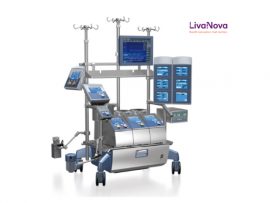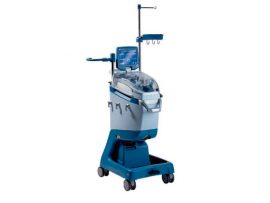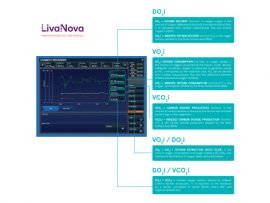Abstract Introduction: According to different authors, cardiac surgery-associated acute kidney injury (CSA-AKI) incidence can be as high as 20–50%. This complication increases postoperative morbidity and mortality and impairs long-term kidney..
Lee masAbstract The development of new extracorporeal blood purification (EBP) techniques has led to increased application in clinical practice but also inconsistencies in nomenclature and misunderstanding. In November 2022, an international..
Lee masAbstract OBJECTIVES The use of cardiopulmonary bypass (CPB) in cardiac surgery is a major risk factor for postoperative bleeding. We hypothesized that consumptive coagulopathy and haemodilution influence the coagulation factors;..
Lee masAbstract Objective: This study aimed to investigate the correlation between the number of bypassed vessels, the duration of Cardiopulmonary bypass, blood transfusion requirements, revision rates, and mortality outcomes. The objective..
Lee masAbstract Cardiopulmonary bypass (CPB) provides cerebral oxygenation and blood flow (CBF) during neonatal congenital heart surgery, but the impacts of CPB on brain oxygen supply and metabolic demands are generally..
Lee masAbstract Objective: Extracorporeal circulation (ECC) is generally based on standards established in the last decade. In recent years, a concept of perfusion management during ECC, goal-directed perfusion (GDP), has emerged..
Lee masAbstract Technical advances in extracorporeal membrane oxygenation (ECMO) have increased the number of cases that maintain longer duration. Long-term use of ECMO results in ECMO-related complications. Anticipation of the life-threatening..
Lee masAbstract Estimating thresholds when a threshold effect exists has important applications in biomedical research. However, models/methods commonly used in the biomedical literature may lead to a biased estimate. For patients..
Lee masAbstract For single-lumen veno-pulmonary extracorporeal membrane oxygenation (VP ECMO) cannulation in percutaneous technique, vascular ultrasound (U/S) and transesophageal echocardiography (TEE) guidance were used to insert a 7 Fr pulmonary artery..
Lee masAbstract The describes the network of the smallest vessels in our cardiovascular system. On a microcirculatory level, oxygen delivery is determined by the flow of oxygen-carrying in a given single capillary (capillary..
Lee masAbstract I read with keen interest the article by van Minnen et al. on contemporary mechanical ventilation strategies during extracorporeal membrane oxygenation (ECMO). The article specifies details on ventilation practices employed in..
Lee masAbstract Extracorporeal membrane oxygenation (ECMO) is a temporary lifesaving treatment for critically ill patients with severe respiratory or cardiac failure. Studies demonstrated the feasibility of in-hospital mobilizing during and after..
Lee masAbstract Cardiogenic shock (CS) is a complex and life‐threatening condition characterized by a sudden and profound reduction in cardiac output, leading to inadequate tissue perfusion and oxygen delivery and organ..
Lee masAbstract National trends show rapid increases in the use of mechanical circulatory support devices (MCSD) over the last 20 years. While current literature has not proven a mortality benefit in..
Lee masAbstract Purpose: Venoarterial extracorporeal membrane oxygenation (V-A ECMO) can be used to support severely ill patients with cardiogenic shock. While age is commonly used in patient selection, little is known..
Lee masAbstract Purpose Anemia reduces the blood’s ability to carry and deliver oxygen. Following cardiac surgery, anemia is very common and affects up to 90% of patients. Nevertheless, there is a..
Lee masDose-dependent influence of red blood cell transfusion volume on adverse outcomes in cardiac surgery
Abstract Introduction Red blood cell (RBC) transfusion is associated with adverse outcomes, but there are few studies on the RBC volume. This study aimed to evaluate the relationship between intraoperative..
Lee masAbstract Objective: This study was performed to evaluate the effect of a homemade autotransfusion pressure-control system on the regulation of negative pressure and to clarify the influence of different negative pressures..
Lee masAbstract Background Nontechnical skills in cardiac surgery are vital in ensuring patient safety in the operating room (OR). To train these skills in a simulation-based scenario, a collection of commonly..
Lee masAbstract Introduction: Nowadays, many cardiac surgery teams are adopting the goal-directed perfusion (GDP) strategy in their practice to maintain optimal perfusion during cardiac surgeries and improve patient outcomes. Furthermore, it plays..
Lee masAbstract Direct true lumen through aortic for during surgery for acute Stanford type A was reported by Jacob, followed by Conzelmann who used a tourniquet to snag the . Since 2013, Samurai cannulation, a modified version..
Lee masAbstract There has been an increase in the use of extracorporeal membrane oxygenation (ECMO) to bridge critically ill patients to lung transplant (LTX). This study evaluates how ambulatory status on..
Lee masAbstract Background Autotransfusion following vaginal delivery has not been as widely adopted and existing data on this topic are limited to small case series. Methods This is a single-center retrospective..
Lee masAbstract Background: This study investigated the clinical outcomes at the minimum and maximum levels of hematocrit (HCT) during cardiopulmonary bypass (CPB) in low-risk patients undergoing coronary artery bypass graft (CABG)..
Lee masAbstract Background The most common complication of thoracic aortic disease with shaggy aorta is cerebral infarction. We have performed “low-flow perfusion” as a method of extracorporeal circulation to prevent cerebral..
Lee masAbstract Objective: Postoperative delirium (POD) is strongly associated with poor early and long-term prognosis in cardiac surgery patients with cardiopulmonary bypass (CPB). This study aimed to develop dynamic prediction models for..
Lee masAbstract Enhanced Recovery After Surgery (ERAS) programs have been shown to lessen surgical insult, promote recovery, and improve postoperative clinical outcomes across a number of specialty operations. A core tenet..
Lee masAbstract Left ventricular (LV) unloading has been shown to improve survival for patients requiring veno-arterial extracorporeal membrane oxygenation (VA ECMO) support for cardiogenic shock. A mortality benefit has been shown..
Lee masAbstract Purpose: We aimed to conduct a systematic review and meta-analysis to assess the effects of anemia and anemia severity on patient outcomes in cardiac surgery and determine whether preoperative treatments..
Lee masAbstract Background and objective: Extracorporeal membrane oxygenation (ECMO) has been successfully and widely used in adult patients for the past 5 years. About 50% of these patients can survive and are..
Lee mas














